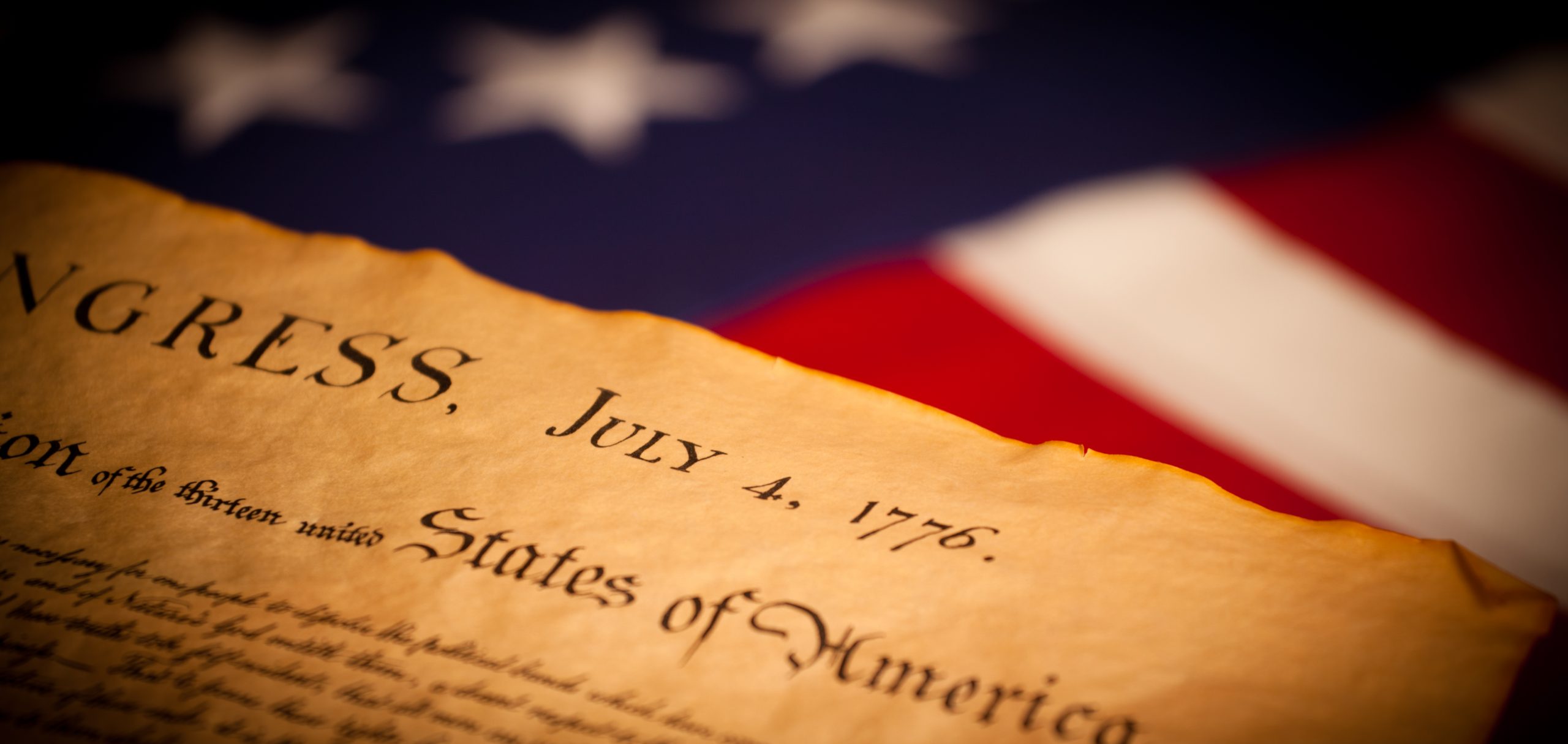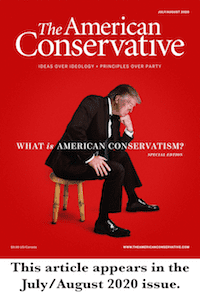Conservatism is Rooted in Natural Rights

Is there a distinct form of American conservatism that distinguishes it from varieties of conservatism found in other countries? The answer to that question is certainly “yes.”
The conservative movement in America in the post-war period advanced in two broad stages. In the first phase, running from the 1950s into the 1970s, influential thinkers sought to define conservatism broadly in terms of an approach to politics and society that transcended national boundaries. In the more recent period, conservatives have advanced a set of ideas that are uniquely American, focusing on America’s founding institutions, the Founding Fathers, and a few other notable American thinkers.
William F. Buckley, Jr., is generally credited with launching the post-war conservative movement when he founded National Review in 1954. In launching the magazine, Buckley was greatly influenced by two canonical books that shaped conservative thought in the 1950s: Witness, by Whittaker Chambers (published in 1952), and The Conservative Mind, by Russell Kirk (published in 1953). These books were widely read (both were best-sellers) and favorably reviewed in prominent newspapers and journals, and had great appeal to a reading public searching for something different after two decades of liberal control of national politics. Both Witness and The Conservative Mind, however, outlined versions of conservatism that transcended national boundaries and particular regimes. They were about “Conservatism,” not necessarily American conservatism.
Witness was an autobiographical work in which Chambers traced his personal journey from communism to Christianity, culminating in his confrontation with Alger Hiss over Hiss’s role in espionage on behalf of the Soviet Union. The dominant theme of Witness, leaving aside the Hiss case, was religious rather than political. Chambers saw in communism the latest campaign by secular man to displace God as the source of morals and meaning in life and history. Witness, as a work of conservative thought, sounded the alarm that Western civilization was under threat not merely from communism but from secular doctrines in general, including socialism and liberalism. In contrasting himself with Hiss and his supporters, Chambers also drew a line between common citizens (like himself) and highly educated elites who were prepared to sell out the country for their secular ideals—thus pointing toward a conservative version of populism. Nevertheless, Chambers ended the book on a pessimistic note: he said that in abandoning communism he had joined the losing side against the inevitable winners.
The Conservative Mind was a different kind of book, an effort by Kirk to trace the threads of conservative ideas in the writings of prominent thinkers extending back into the 18th century.
Kirk located the origins of conservative thought in Reflections on the Revolution in France, Edmund Burke’s broadside against the French Revolution where he made the case for tradition, continuity, and stability in politics against the abstract claims of the revolutionaries that turned France upside down. Kirk identified various conservative themes in the writings and speeches of others who were not ordinarily classified as conservatives—figures such as John Adams, Tocqueville, Disraeli, Santayana, and many others. In doing so, he demonstrated that conservatism had a respectable intellectual lineage. He concluded his book by identifying several themes common to conservatism: a belief in divine purpose, continuity and tradition, private property as a foundation for freedom, and common sense as opposed to abstract reasoning in politics.
Kirk spent little time on America’s Founding Fathers or on the Constitution and the Constitutional Convention, barely mentioning Madison, praising Hamilton for his conservatism but criticizing him for poor judgment in favoring political centralization, and disdaining Jefferson for embracing Locke, abstract ideals, and the French Revolution. Kirk, leaning on the writings of Orestes Brownson, understood conservatism in America more in terms of the habits and mores of the American people rather than in terms of the Constitution or the Declaration. In his criticisms of Jefferson, Kirk implied that he did not look favorably upon the Declaration of Independence and especially those passages in the Declaration that Jefferson borrowed from Locke (“We hold these truths to be self-evident…”). Kirk mentioned Lincoln only in passing, and in the sectional conflict expressed greater sympathy for the plantation South than for the industrial North.
These works had great influence in the growth of the conservative movement from the 1950s into the 1970s and 1980s—and rightly so; they laid the groundwork for a movement that until then was moribund and lacking in direction. Those works are still widely read today. Viewed historically, these writers had to define conservatism broadly before they or others could give it a national interpretation. Yet that may have been a weakness. They did not articulate an American version of conservatism that celebrated the country’s founding institutions along with popular heroes like Jefferson, Madison, Hamilton, and Lincoln.
Beginning in the 1970s, perhaps because of the bicentennial of the Declaration of Independence and, a dozen years later, of the U.S. Constitution, or because of the election of Ronald Reagan, conservatives began to focus more intently upon the nation’s founding institutions, especially the Declaration with its ringing endorsement of natural rights. Historians and biographers such as Gordon Wood, Joseph Ellis, Richard Brookhiser, and others highlighted the distinctly American contribution to political theory in the Declaration, the Constitution, the Federalist Papers, and other writings emanating from the founding generation. Due in part to the growing relativism of the American Left, conservatives endorsed the absolute language of the Declaration, which left no doubt as to the truths upon which the nation was founded. Here was something of a change: conservatives began to embrace the natural rights philosophy of John Locke, an outlook that Kirk criticized as abstract, individualistic, and potentially radical. The new outlook represented a distinctly American version of conservatism, one that resonates well with the American public—and for that reason has contributed to the rise of conservatism as a popular movement.
There is also the issue of Abraham Lincoln and the Civil War. Russell Kirk rarely mentioned Lincoln in The Conservative Mind, and did not parse the Lincoln-Douglas debates or Lincoln’s wartime speeches, where Lincoln set up the struggle over slavery in terms of the natural rights delineated in the Declaration of Independence. The emergence of Lincoln as a conservative hero late in the 20th and early in the 21st centuries could not have been predicted based upon Kirk’s book or the conservative mood of the  1950s and 1960s. This owes something to Harry Jaffa’s pathbreaking book, The Crisis of the House Divided (1959), in which he showed that it was Lincoln and not his adversaries who were faithful to the Declaration and the Constitution—and to his many students who continue to raise the flag of Lincoln.
1950s and 1960s. This owes something to Harry Jaffa’s pathbreaking book, The Crisis of the House Divided (1959), in which he showed that it was Lincoln and not his adversaries who were faithful to the Declaration and the Constitution—and to his many students who continue to raise the flag of Lincoln.
With the dust now settled, we can see in all this the emergence of a more distinctively American version of conservatism, based upon the Founding Fathers, the nation’s founding documents, the writings and speeches of Abraham Lincoln—and, of course, the natural rights philosophy limiting government to a few important duties. This was an important corrective to (but not a repudiation of) the conservative writings of the early 1950s. It was also essential to the rise of conservatism as a popular political movement: before it could succeed politically, the movement had to embrace more forcefully the nation’s founding philosophy of natural rights.
James Piereson is a senior fellow at the Manhattan Institute.
Related: Introducing the TAC Symposium: What Is American Conservatism?
See all the articles published in the symposium, here.
Comments